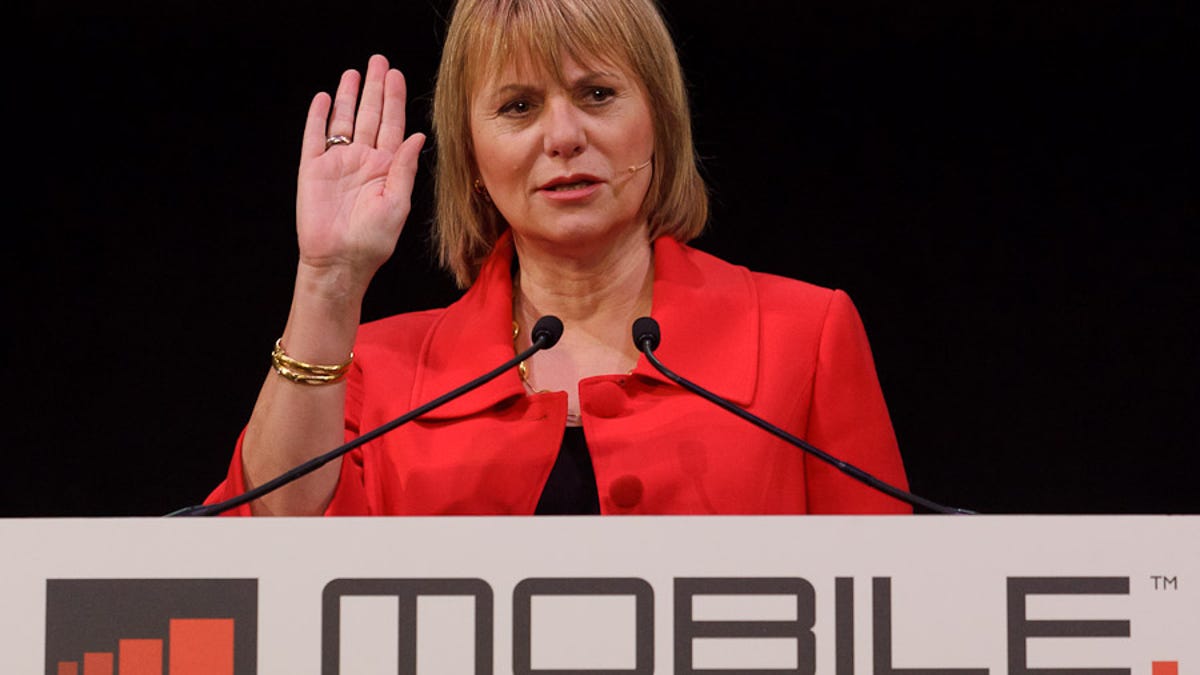At Yahoo, contextual content key for mobile devices
Speaking at Mobile World Congress, Yahoo CEO Carol Bartz touts the virtues of the company's new Livestand "digital newsstand" for gadgets in varying dimensions.

BARCELONA, Spain--In a mobile world, size shouldn't matter, but context should.
That was the message from Yahoo CEO Carol Bartz as she demoed the company's new Livestand service at the Mobile World Congress 2011 here today.
Livestand, announced last week, aggregates and personalizes all types of content for users and optimizes it for every type of device. Dubbed a "digital newsstand," it serves up stories, information and ads based on a person's interest and eliminates the need for publishers to create multiple versions of content for different devices.
For mobile devices, where small screen size spoils the display of content created for the PC, relevance is particularly important, Bartz said.
"The screen sizes are going to be all over the place," she said. "The whole concept is publish once and have it available on any device."
She demonstrated Livestand on an iPad. In contrast to Yahoo's regular Web site which is cluttered with text, images and ads, the Livestand interface looked clean and simple. Tailored to a specific Yahoo employee helping with the demo, the site showed modules that included a surfing magazine, surf and weather forecasts, a surfboard buyer's guide and news about sports.
Livestand automatically personalizes the content based on machine learning and human editorial oversight, which Bartz called the "secret sauce."
Friends can share content with each other on Livestand and exchange comments on it via Facebook and Twitter.
"We at Yahoo consider that advertising is also great content," Bartz said as the demo showed a Nike video and a sports watch ad. Later in the demo a friend's comment popped up in real time related to the ad.
In a question-and-answer session after Bartz and three other technology CEOs gave their vision of the future of mobile computer, Intel's Paul Otellini said there would be Intel-powered smartphones out later this year.
Meanwhile, Cisco's John Chambers said video would be a focus for mobile in the near future, requiring service providers to beef up their network performance and management capabilities.
And SoftBank's Masayoshi Son proudly discussed how his company's $20 billion purchase of Vodafone Japan in 2006 is paying off now, fueled by data demand over smartphones. But at the time he was called crazy for the move, the share price dropped, and the company lost $1 billion every year for four years, he said. Since then mobile data traffic has grown 30 times, he said.
"People started saying mobile is no longer profitable and so on," he said. "It was a risky bet...[but] sometimes craziness gives a good return."
"Mobile carriers are becoming dumb pipes," he added. "That's the depressing reality."

